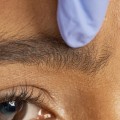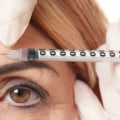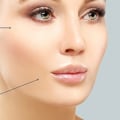You may think that the cost of Botox isn't worth it, but there are both short and long term benefits to this treatment. Botox not only reduces wrinkles and stops aging, it also offers medical benefits. In the short term, Botox can immediately improve the appearance of your lines. Most dermatologists agree that Botox is a safe and reliable treatment.
Millions of procedures are performed each year, with almost no reports of serious side effects. It's also worth noting that while Botox is primarily used for cosmetic purposes, injections into a patient's armpit can decrease hyperhidrosis, or excessive sweating, and injections in the head and neck can help relieve migraines. One InStyle writer obtained Botox to address massive migraine attacks and ended up reducing what she referred to as her 'resting dog face'. If you're considering Botox when you're 30, it's important to talk to a dermatologist about why you want treatment.
If you're interested in preventive Botox, experts recommend reading about the procedure, getting an idea of how you'd like to look, and finding a qualified medical professional you trust. After receiving Botox, it's important to avoid going to bed immediately, rubbing the treated area, or doing activities that require the head to be in unusual positions. By injecting Botox, you can help your body produce more collagen and essentially freeze the muscles in your face, forcing them to relax. If you choose not to continue with treatments, muscles that remain out of use while Botox is active can slow down the aging process; it reduces movement when injected, slowing down wrinkle formation. Experts warn that complications can arise if Botox is not injected correctly, which can lead to bruising, facial asymmetry and falling. Over time, a repeated Botox user weakens her facial muscles, slowing down the process in which dynamic lines (those formed when she is making an expression) settle on static lines (those visible when her face is at rest).When women in their 20s first consider receiving Botox, prevention is often the main factor as early signs of aging such as crow's feet, forehead wrinkles and fine lines begin to appear.
However, too much Botox and filler can distort your face and make you look older. Long-term use of Botox in traditional or preventive amounts may cause muscles to weaken over time and give the skin a thinner and looser appearance. While some dermatologists and plastic surgeons say they are seeing an increasing number of men coming for preventive treatments, most people interested in starting Botox at a younger age are women in their 20s and 30s. For women who remain aware of the size or symmetry of their lips, think of a slightly unbalanced appearance; for example, Botox can be injected into the orbicularis muscle or the muscle along the lip line as an alternative to lip fillers. Although cosmetic Botox has been approved by the Food and Drug Administration since 2002, it can seem quite extreme. While most people who use botulinum toxin - the neurotoxic protein known by its brand name Botox - are women over 40, there has been talk on social media about how starting it when you're young can help stop the signs of aging even before they start.
Because of my previous opinions on Botox, part of me felt that trying it would mean selling my principles.


